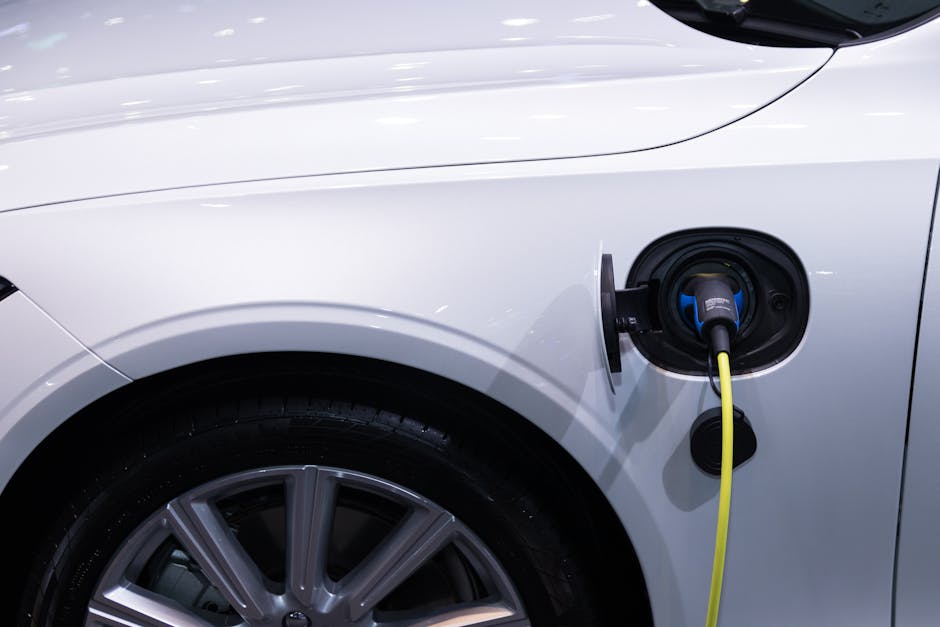
The Dawn of a New Era in Performance
The automotive world is constantly pushing the boundaries of what's possible, and at the forefront of this evolution, the supercar segment often acts as a proving ground for groundbreaking technologies. Recently, the unveiling of the new model Porsche 911 Turbo S has sent ripples through the industry, not just for its iconic design, but for the truly innovative hybrid technology it carries under its sleek exterior. This isn't merely an incremental upgrade; it’s a significant leap forward, primarily driven by its revolutionary integration of two electric turbos.
As an IT journalist, my focus extends beyond the roar of the engine to the intricate systems and forward-thinking engineering that shape our future. The Porsche 911 Turbo S, with its blend of traditional power and cutting-edge electrification, offers us a compelling glimpse into how technology is redefining performance, efficiency, and ultimately, the very experience of driving at what we can only describe as future supercar speed.
Beyond Horsepower: The Genius of Twin Electric Turbos
For decades, turbochargers have been synonymous with raw power, but also with a slight delay known as "turbo lag." This momentary pause before the boost kicks in has been a persistent challenge for engineers. Enter the game-changing solution: the electric turbo. In the Porsche 911 Turbo S, the deployment of two electric turbos marks a paradigm shift.
Unlike conventional turbos that rely solely on exhaust gases to spool up, these electric variants integrate an electric motor directly into the turbocharger assembly. This motor can instantly spin the compressor wheel, eliminating lag and delivering boost the moment the driver demands it. The result is an instantaneous, seamless surge of power that feels more natural and responsive than ever before. This technology isn't just about raw acceleration; it's about optimizing the power band, improving throttle response, and ensuring that every command from the driver translates into immediate action, dramatically enhancing control and driving dynamics.
The Hybrid Advantage: Power Meets Precision
The true brilliance of the new model Porsche 911 Turbo S lies in how these two electric turbos are integrated into a broader hybrid technology platform. This isn't a hybrid system designed merely for fuel economy (though it offers efficiency gains); it's a performance-first hybrid. The electric components work in concert with the internal combustion engine, providing torque fill at low RPMs where traditional engines might falter, and boosting overall power output when maximum performance is required.
This intelligent combination allows the car to achieve unprecedented levels of acceleration and responsiveness. The electric motors, acting in conjunction with the turbos, can pre-spool them, ensuring that the engine is always in its optimal power delivery zone. This synergy doesn't just add horsepower; it refines the entire driving experience, making the immense power of the Porsche 911 Turbo S more accessible and controllable, pushing the boundaries of what's possible for future supercar speed.
Driving the Future: Impact on the Road and Beyond
The implications of this innovative hybrid technology in the Porsche 911 Turbo S extend far beyond the racetrack. For users, it means an unparalleled driving experience characterized by instant power, exhilarating acceleration, and a level of refined control previously unimaginable. It bridges the gap between raw mechanical power and the precision of electric propulsion, offering the best of both worlds.
From a broader perspective, this development sets a new benchmark for the automotive industry. It demonstrates that high-performance vehicles can embrace electrification not as a compromise, but as a means to achieve superior dynamic capabilities and a more sustainable future. The sophistication of managing such a complex powertrain – synchronizing electric motors, traditional engines, and electric turbos – highlights the growing importance of software and data in automotive engineering. This "trickle-down" effect means that the innovations perfected in vehicles like the Porsche 911 Turbo S will eventually find their way into more mainstream cars, leading to more efficient, responsive, and enjoyable vehicles for everyone.
A Glimpse into Tomorrow's Automotive Landscape
The new model Porsche 911 Turbo S is more than just another supercar; it's a technological statement. Its innovative hybrid technology and the integration of two electric turbos are not merely about increasing speed, but about redefining the very nature of performance and efficiency in the automotive sector. It showcases a future where cutting-edge engineering and sustainable practices converge to create vehicles that are faster, smarter, and more exciting than ever before.
As we look towards the horizon, the advancements embodied by the Porsche 911 Turbo S serve as a powerful indicator of the exhilarating journey that lies ahead for automotive technology, driving us confidently towards an era of true future supercar speed and beyond.
Comments
Post a Comment